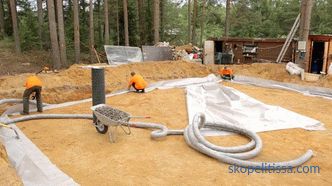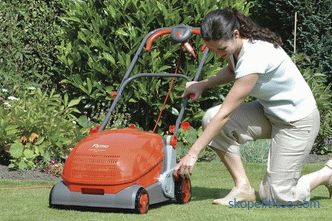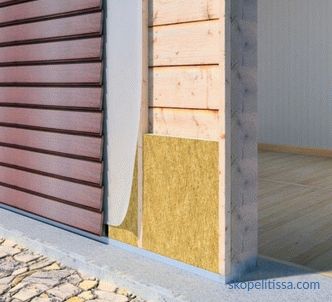Homeowners who use solid fuel for heating their stoves are not aware of such a nuisance as cooling the room after they burn firewood in the stove. This can happen at night or during the long absence of the owners.
In these cases, the combined boiler for heating a private house, firewood-electricity, will help to keep the temperature. Such heat sources are equipped with automatics, which monitor the system - if the furnace goes out and the water in the boiler cools down, it gives the command to turn on the electric heating elements.
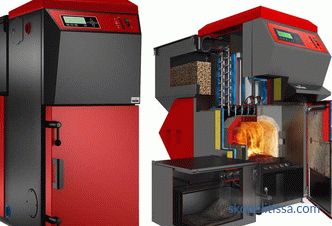
Use of combined boilers
Today, such devices are universal, and at the same time cost-effective devices for autonomous heating of the house. Their main trump card - no binding to one type of fuel. If such a boiler is powered by electricity, then during a sudden shutdown it is possible to melt a wood-burning stove to retain heat in the house and vice versa.
The purchase of a combined boiler solves several tasks at once:
-
If there is no gas pipeline in the village where the house is built, then there is an opportunity to use two An alternative type of energy carrier is solid fuel and electricity.
-
If the country house is connected to a weak power supply line, a combined boiler is almost an ideal option - you do not have to freeze if you need to turn on another powerful electric appliance for a long time.
-
Eliminates cooling the house when using solid fuel. Such a unit connected to water heating helps to maintain a constant temperature in the system: in case of fuel burn-through, the boiler automatically switches to heating via heating elements. This is especially convenient at night: do not get up and put firewood in the furnace of the furnace.
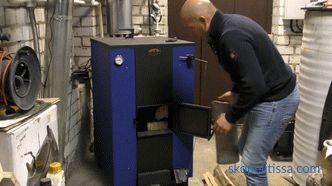
Principle of operation
The combined wood-electricity boiler operates according to the following algorithm :
-
Melting and heating of the unit takes place in the traditional way. During the burning of solid fuel (wood, coal, briquettes), the water temperature is maintained using a thermostat together with a sensor. Electric heaters do not work at this moment.
-
If you do not add fuel to the furnace in time, after it burns down, the water temperature in the system gradually decreases to a certain value, after which the sensor triggers, which closes the control contacts and the heating element turns on (one or more ). From this moment on, the boiler starts working from the power supply network.
-
After the next fuel load, the water in the pipes is heated from the side of the firebox and, when the set temperature is reached, the sensor is triggered again, but already to disconnect the heating elements. The electric part of the boiler is again inactive until such time as the water temperature decreases again.
Most often, the electric heater in the combined boiler is designed as an auxiliary heating device, but if you wish, you will be able to choose a boiler model that, if necessary, will be able to operate continuously, providing hot water for the house and the heating system.
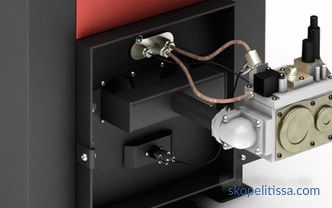
The principle of operation of the combined boiler is illustrated in the video:
On our site you can find contacts of construction companies that offer home insulation services. Directly to communicate with representatives, you can visit the exhibition of houses "Low-rise Country".
Positive and negative aspects of combined boilers
When choosing any equipment, one should focus not only on its positive sides, but also study the shortcomings in order to understand which characteristics are more important for you.
Advantages of
The advantages of firewood-electricity devices compared to heating units that operate only on one type of fuel are obvious:
-
Versatility equipment. Electricity for the boiler can be both the main source of energy and auxiliary - what will be the priority only for you.
-
Autonomy . There is no need for constant monitoring, as the boiler is equipped with automation.
-
Economy . Firewood is one of the most affordable types of fuel in many regions of the country, and now it’s almost impossible to find a house without connecting to the power grid.
-
Comfortable design . Constant support of the set temperature of water with the minimum expenses of energy.
-
If a two-tariff counter is installed, it is possible to program the boiler to turn on heating elements only to maintain heat at night, when billing is much lower and thus to save electricity consumption .
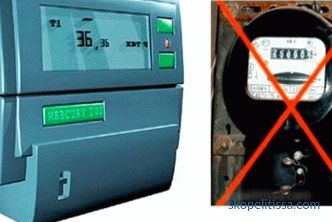
-
Long service life . Such boilers with proper operation work up to 25 years.
-
The production of models with built-in nozzles for the possibility of connecting the “warm floor” system has been put in place.
Important! Wood-electricity boilers work efficiently even on low-power modes.
Disadvantages
For all their merits, there are drawbacks to such boilers:
-
Separate room . For units of this type requires its own boiler room and an attachment for storing fuel.
-
Great weight . Most often, the boilers are made of cast iron and require a solid concrete base for its placement.
-
Device complexity . This factor affects the price of the boiler: it is 20-30% higher than the cost of units operating on the same fuel.
Note! The electrical heating elements of most of the combined boilers are designed primarily to support heat. In winter, when the external temperature is below -5 ° C, they cannot completely replace the burning of solid fuel due to low power. If long-term use of electric heaters is intended, it is necessary to look for models of boilers operating from three-phase power (if such is carried to the house).
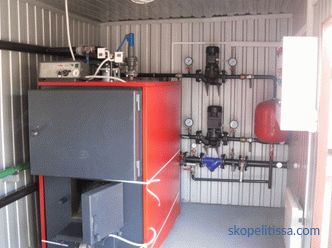
It might be interesting! Read the article in the following link about a gas boiler for heating a private house.
With proper “distribution of responsibilities” between a wood-burning stove and an electric heater, the use of heating boilers for a private house with wood and electricity is not only convenient, but also beneficial. And in regions where there is no pipeline, a decent alternative to such a device is quite difficult to find.
Recommendations when choosing a boiler
Today the market offers a rich assortment of universal boilers that differ in power, performance, performance and equipment. But before you buy such a unit, you need to weigh the pros and cons, and it is also useful to listen to the recommendations of the professionals in this matter.
When buying a boiler, consider the following:
-
Power . It depends on the fuel that will be in priority.
-
The volume of one fuel bookmark and the size of the combustion chamber . The duration of firewood burning depends on this parameter.
-
The material of the firebox is . These parts are made of iron and steel. It is preferable to choose the chambers of cast iron, since they are not susceptible to deformation when heated, retain heat longer, unlike the steel exchanger.
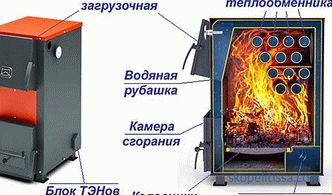
-
Grid bars . Two types are used: standard cast iron and the same, but with a coating of ceramics. The latter are mainly used for bulk materials that consume more oxygen during combustion, respectively, and the temperature is created higher.
-
Weight and size . Typically, the body of such boilers are made of cast iron, which makes them much heavier than their "brothers".
Tip! To buy a heating device, you need to be consistent with the area of the house. You should not purchase a boiler "with a margin of power", as this will entail an overpayment - both during the purchase and during operation.
Installation requirements
Combined boilers according to SNiP 41-01-2003 must meet the requirements. At the same time, they have their own characteristics during installation and operation, distinguishing them in a series of similar units operating on a single fuel.
These requirements and recommendations must be known and carried out in order to ensure safe operation of the boiler.
Requirements for a room
Boilers for wood and electricity for heating a house are produced only in the floor version and are installed in a boiler room with ventilation, and in accordance with other requirements of the building code:
-
Walls in a room made of non-combustible material.
-
The equipment in the boiler room is installed no closer than 300 mm from the walls.
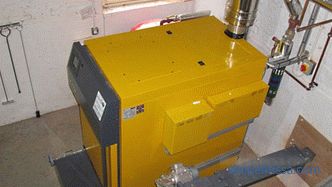
It might be interesting! In the article on The following link reads about how to choose a circulating pump for heating a private house.
-
The boiler room must be dry and moisture-proof.
-
Since the boiler is heavy, the area under it is reinforced by a concrete tie.
Also, the room must comply with fire safety regulations: there are no combustible objects or flammable liquid near the boiler; an iron sheet is installed in front of the firebox to prevent ignition if coal is fired or a spark from the firebox.
Chimney
When installing an electric wood boiler, a prerequisite is the presence of a chimney like a unit with solid fuel. For the smooth operation of the installation, good traction is needed, for which the pipe must rise above the ridge of the roof of the house and have an internal diameter not less than the boiler nozzle.
The chimney pipe must be without mechanical damage, and have a tight joint joints. During the operation of heating elements, it is recommended to make a view for keeping heat in the chimney. It is also desirable to insulate the pipe so that condensate does not form in case of subzero weather.
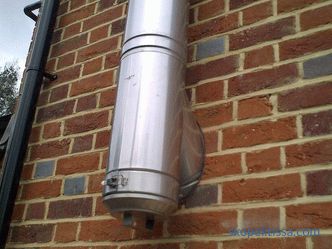
Requirements for the electrical network
When installing an electric wood boiler currently do not ask permission Gorenergo. But in any case, it is necessary to have a power supply capable of withstanding the work of heating elements without causing overloads.
For example, if the boiler is supposed to be used due to the connection of heating elements over 6 kW, then the voltage should be 380 volts.
In any case, the connection of the device must be strictly according to the instructions. In this case:
-
It is not allowed to install the combined boiler in a room where excessive humidity or contact of the electrical part of the equipment with water is likely.
-
The temperature range in the room should be between 0 and +45 ° C.
-
The wire size is calculated and corresponds to the required power and current strength.
Despite such seemingly simple requirements, certified specialists should produce installation and connection of the combined boiler. In this case, in addition to the quality of work performed, you are entitled to a free warranty repair of the boiler, if the failure occurred due to a defect in the equipment.
Combined boilers also call such devices, which were originally designed to operate from solid fuel, but they also provide the ability to connect electros separately:
It may be interesting! In the article on the following link read about heating a country house without gas.
Conclusion
Today, electricity and solid fuels are the most popular and affordable energy sources for heating boilers. Boilers that can heat a house by burning wood or using electricity are an effective solution and, moreover, are no different from conventional devices in terms of reliability.
Rate this article, we tried for you
